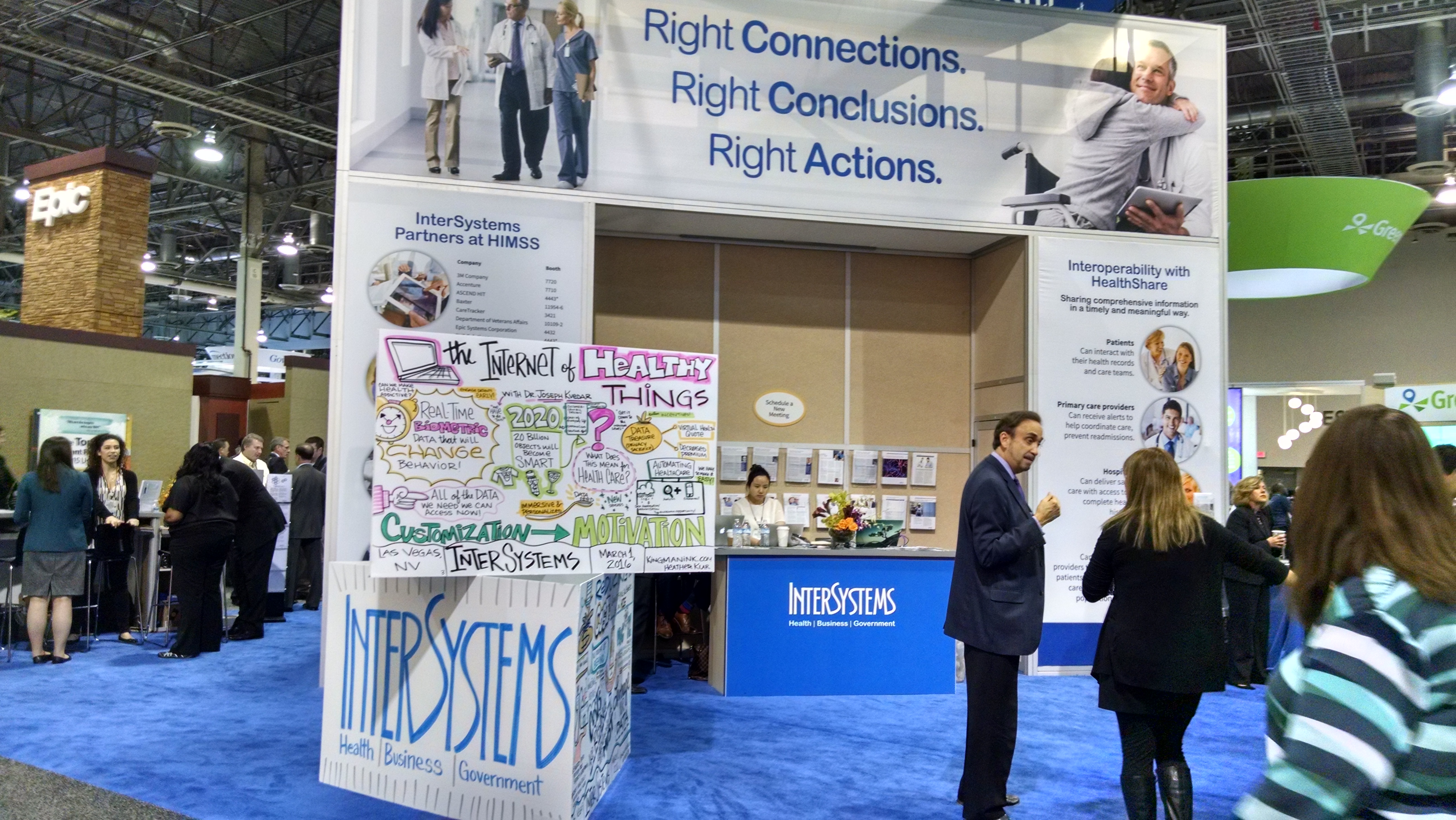At HIMSS16, Massachusetts Leads Health IT into Next Stage of Data Analytics and Value-Based Care
 Monday, April 11, 2016 at 1:21PM
Monday, April 11, 2016 at 1:21PM Massachusetts is known for pioneering healthcare reform programs that led national efforts and we continue to demonstrate leadership in advancing quality improvements in healthcare delivery. At the recent annual HIMSS16 conference in Las Vegas, where approximately 42,000 health IT vendors and customers convened to exchange the latest information on health IT and analytics innovations, it was clear that Massachusetts is in the pole position to retain the lead in developing the next generation of health IT and analytics solutions.
Healthcare analytics depend on a reliable foundation for data collection and data management. With database infrastructure that serves 2/3 of the US population via its healthcare provider clients, InterSystems has played a key role in establishing the health IT foundation. Although they have generally operated behind-the-scenes, InterSystems is moving into a more visible role as they offer solutions for care coordination and advanced data analytics. I expect more people in healthcare will know their name in the future.

InterSystems booth at HIMSS16
GE, IBM and Xerox are extremely well-known corporate names that are recognized in the healthcare sector. These storied corporate brands have demonstrated a history of innovation and reinvention that they are applying to an array of data management, analytics, and connected health initiatives. With decades of experience in enterprise computing and cultures that are skilled at integrating acquisitions to build best-of-breed solutions, these corporate giants will likely remain leading names in healthcare for the foreseeable future.
There are far too many product and corporate development announcements made at HIMSS to attempt a recap, even if it were limited to companies with strong ties to Massachusetts. However, the announcement of the $2.6 billion acquisition of Truven Health Analytics by IBM Watson is one that captured a lot of attention. Furthermore, I heard from more than a few experienced health IT professionals who would jump at the opportunity to join IBM’s expanding team at its new Watson Health headquarters near Kendall Square.
In healthcare, financial incentives and regulatory requirements factor into most major business and clinical decisions. Telehealth is a great example. The technology has been available for some time, but regulations held back the supply of doctors available to practice across state lines. More important, the lack of a clear path for reimbursement constrained interest from clinicians. With the advent of recognition of the value of telehealth by payers, Boston-based American Well has been able to expand its portfolio of services to include multiway video, a mobile SDK, and the Telemed Tablet that facilitates specialist consultations via mobile teleconferencing.
Securing access to protected health information is another area where the right technology can overcome barriers to efficient workflow. Lexington-based Imprivata, a leading provider of health IT solutions for single sign-on and secure communications, is known for its clever and informative presentations at HIMSS which attract a large audience to its booth every year and didn’t disappoint this year.

Imprivata booth at HIMSS16
The overarching theme of my coverage of HIMSS16 has been how health IT has entered a more mature phase, where basic IT capabilities are a required part of doing business and more advanced solutions are in the spotlight. New value-based care and payment models depend on a higher degree of care coordination and need to involve patients in care decisions. Massachusetts has many early-stage and more “mature” health IT companies that offer solutions for secure communications, data exchange, population health analytics, and patient decision tools that all contribute to a more efficient connected care continuum. Other notable MassTLC member companies that are playing a role in transforming healthcare & were represented at HIMSS16 run the gamut from start-up PatientPing, not-for-profit government systems engineering and analysis company Mitre, and big data analytics company, Optum Labs and athenahealth, whose CEO, Jonathan Bush, always manages to capture the spotlight at HIMSS.
HIMSS is not just a conference; it is an event that combines education sessions, keynote addresses, exhibit hall demonstrations, and social events. Health IT companies from Massachusetts also stood as sponsors of some of the “must-attend” social events, too. Here’s a picture of the author at HIStalkapalooza, posing with Elvis and Pat Rioux, who works for Elsevier in the Boston area. Elsevier and athenahealth are both sponsors of HIStalkapalooza.

Janice McCallum, “Elvis”, and Pat Rioux at HIStalkapalooza, HIMSS16
This article first appeared in the MassTLC blog: http://blog.masstlc.org/2016/03/at-himss16-massachusetts-leads-health.html. This is an updated version and is republished here with permission.

